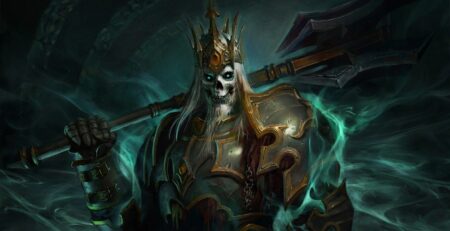Blue Lock has captivated audiences with its unique take on the sports genre, focusing on individual growth and ego within the context of soccer. At Anime Expo 2024, we sat down with producer Ryoya Arisawa and manga editor Megumu Tsuchiya to go deeper. We explored the creative process behind this groundbreaking anime, the challenges faced in its adaptation, and the inspirational messages it aims to convey.
Blue Lock sets itself apart from traditional sports anime by emphasizing individual growth and ego within the context of soccer. As Megumu Tsuchiya explains, “Blue Lock’s main theme is ego, an individual element. Usually, sports manga focus on the team, but with Blue Lock, they wanted to highlight the individual and their growth.” This departure from the norm brings a fresh perspective to the genre, making it more about personal battles than team dynamics.
Ryoya Arisawa adds, “The animation team focused on making the battle scenes spectacular, resembling hits like Dragon Ball or others. Even in small details, like sound effects, it’s one big battle instead of focusing solely on soccer, making Blue Lock exciting for those unfamiliar with soccer.” This approach not only differentiates Blue Lock but also broadens its appeal to a wider audience.
Creating a diverse cast of compelling characters, each with a distinct ego, was a significant challenge. According to Tsuchiya, “All the characters have the same goal, which is to become the best striker in the world. Kaneshiro-sensei’s characters have distinct personalities—arrogant, nice, and kid-like. Their backgrounds, such as family and childhood experiences, shape their egos and drive to be the best striker. This backstory development helps create their individuality and makes them compelling.”
Arisawa highlights the importance of visual representation in the anime, “In the anime, the characters were already well-defined from the original works. We had to think about how to show them visually, like changing the color of their aura and eyes to convey their ego and emotions. This visual representation, along with voice acting, brings the characters to life in a way that’s different from the manga.”
Adapting the manga to anime came with its own set of challenges. Tsuchiya recounts, “For the manga, we had to condense three episodes into two, meaning we had to create 160 pages in two episodes, with tight deadlines and limited time to study soccer. This was challenging both time-wise and creatively, but it brought the team closer together.” The animation team also faced time constraints; as Arisawa notes, “The animation also faced time constraints, striving to bring the manga’s original artwork to life while maintaining its specifics. This was a weekly challenge, but the staff’s love for Blue Lock kept them motivated.”
Translating the intricate themes of Blue Lock into realistic soccer plays required a deep understanding of the sport. Tsuchiya shares, “It was a challenge translating Blue Lock’s themes into realistic soccer plays. Watching professional players practice on YouTube helped. Ensuring accuracy in Blue Lock’s portrayal of soccer involved building relationships with players, coaches, and staff, facilitated by the animators’ collaboration with the J League, the Japanese professional league.” This dedication to authenticity ensured that the portrayal of soccer in Blue Lock was believable and engaging, adding another layer of depth to the anime.
At its core, Blue Lock is about more than just soccer; it’s about self-discovery and personal growth. Arisawa hopes viewers take away a powerful message, “The process of reaching a higher goal and overcoming challenges is universal, whether it’s studying, work, or any activity. I hope viewers feel inspired to work harder and positively embrace their ego, realizing their potential for self-improvement.” This focus on individuality and the journey towards self-improvement resonates with audiences, offering a motivational and uplifting experience beyond the realm of sports.
As someone who isn’t a huge soccer fan, I was skeptical about hitting play on Blue Lock for the first time. However, I’m glad I did. The older I get, the more I feel like the message of focusing on your ego is essential to ensuring you meet your goals. The group is always important, but at the end of the day, when you put your head down at night, it’s you who has to go out and slide tackle the next day.
Blue Lock redefines the sports anime genre by focusing on individuality and ego. Through compelling characters, spectacular animation, and a deep understanding of soccer, it delivers a unique and engaging experience. The creators’ dedication and passion, from Megumu Tsuchiya’s meticulous character development to Ryoya Arisawa’s innovative visual representation, shine through in every episode.
As audiences continue to explore the world of Blue Lock, they are reminded of the importance of personal growth and the power of embracing one’s ego. Whether you’re a soccer fan or not, the universal themes and inspirational messages of Blue Lock make it a must-watch in the anime landscape as season 2 approaches in October.
The new season promises to build on the strong foundation laid by the first, offering deeper character development, more intense personal battles, and even more spectacular animations. The creators’ dedication and passion, coupled with their commitment to authenticity and innovation, ensure that Blue Lock will continue to captivate and inspire viewers around the world.
Blue Lock is more than just an anime about soccer. It is a profound exploration of ambition, self-discovery, and the relentless pursuit of excellence. Through its innovative storytelling, compelling characters, and breathtaking animation, Blue Lock challenges the conventions of sports anime and offers a fresh, exhilarating experience. As we eagerly anticipate the release of season 2, there is no doubt that anime will continue to push boundaries and inspire viewers to embrace their egos and strive for greatness.
Blue Lock Season 1 is available to stream on Crunchyroll.
This interview was edited for length and clarity and was conducted via a translator.





